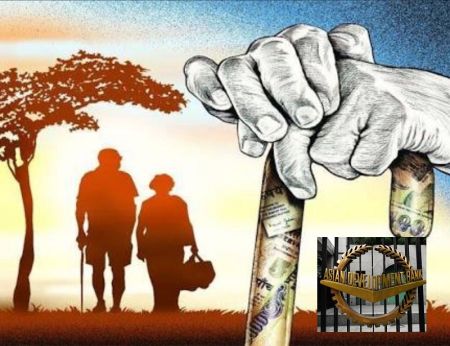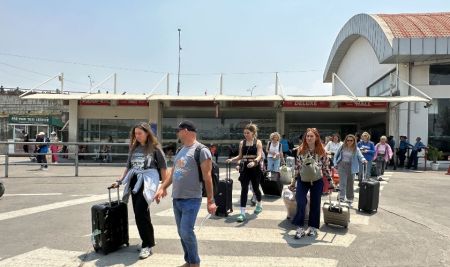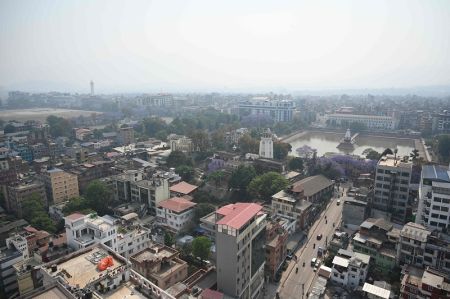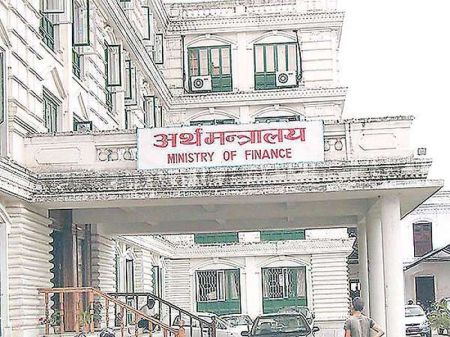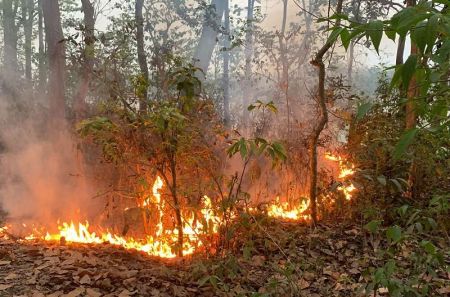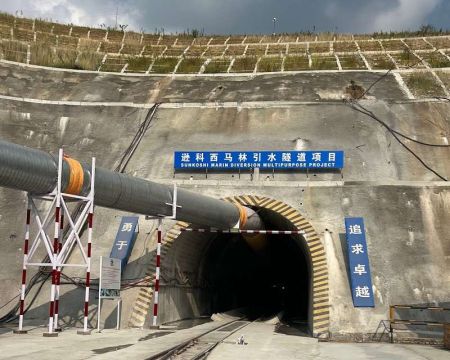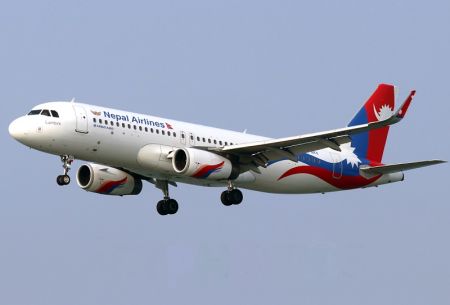‘Airclaims is a major resource for Nepali civil aviation’
Douglas G Cavannagh Risk and Safety Manager Airclaims (A UK-based leading reinsurance company)
How long has your company been involved in the insurance business in Nepal?
Airclaims is the leading provider of claims, risk management and asset management services to the global aviation industry. Founded in 1964 Airclaims has been handling aviation insurance claims in Nepal since the late 1960s. Airclaims currently handles in excess of 2500 assignments each year though a global network of 20 offices. Airclaims is the leading provider of such expertise worldwide.
In terms of Airclaims risk and safety consulting services this service offering was initially utilised by aviation insurance underwriters to assess the risk profile of different operators. The initiation of these studies was often a consequence of a serious accident or a deteriorating loss record on the part of an operator.
As our capability grew these services were expanded to include risk and safety assessments of maintenance, repair and overhaul facilities, helicopter operators, ground handling companies and airports. During the past 20 years many of these services have also been utilised by petroleum and mining companies who use our expertise to assess the risk of different contractors that they use. Airclaims is now one of the leading providers of operator risk assessments in this sector. Our experience is often in demand from investors who require a bespoke due diligence study to assist them to better understand the risks associated with a potential acquisition and to provide valuations and condition surveys of aircraft to potential purchasers or those who wish to update the value of their aviation assets. We also undertake a considerable amount of work for airlines and operators who require a completely impartial assessment of their operation and a worldwide perspective to help them improve their own internal safety capability. This ranges from the initial assessment and needs analysis, to project management, training, coaching and final assessment.
In today’s challenging asset management environment, the demand is for a business partner that not only has a strong reputation and broad capability but also the consistency of approach.
Our integration of what are typically considered separate functions, such as project management, airworthiness oversight, powerplant services and risk management are all combined to form ten core modules, providing a unique capability
How do you differentiate yourself from other companies?
We differentiate ourselves by:
- Drawing on ‘real world’ experience gained from our involvement in the aftermath of many of the largest aviation accidents and losses during the past 50 years.
- Being able to recommend bespoke solutions to mitigate risk based on our work with all the different parties involved in aviation, not just airlines and operators.
- Using our international experience gained from working with many different nationalities and cultures, to train and coach organisations on how to achieve the same objectives using alternative methods.
- Using our exposure to accident sites and our knowledge of emergency response services to tailor procedures to the reality of what actually happens during these events.
The size of your business in Nepal at present?
That really depends on how often there is an accident. Unfortunately for some that has been a little too often. If there was to be a reduction in the number of accidents as a result of Airclaims providing Risk Management rather than Claims Management Services then that would be fine with us too. We are currently the preferred aviation claims handling company for the national airline and a number of domestic operators in Nepal and also most International carriers who operate services to Kathmandu. Our presence in Nepal over many decades has enable Airclaims to build up much valued relationships.
Why is the insurance premium in aviation so high in Nepal?
There are a number of factors that affect the rate at which the insurance premium is calculated in any market. Some of those factors are loss record, operating environment and the type and value of the aircraft being insured.
Nepal is undoubtedly a challenging operating environment for operators and crews in terms of terrain, weather and infrastructure and these factors do mean that along with a loss record that reflects these challenges, insurance costs will be higher. However, with improvements in infrastructure, training and operations, it is quite possible to address many of these factors and in doing so ensure that the cost of insurance is maintained at a reasonable level.
There is also the factor of insurance market capacity something which cannot be directly influenced in Nepal. Worldwide, it could be said that there is a good deal of capacity i.e. insurers who want to underwrite aviation risks. Capacity and competition help keep the price down although, Nepal is seen as a higher risk region because of the factors already mentioned above.
We know that all parties involved in aviation in Nepal are keen to support the improvements that are needed to ensure risk is reduced and Airclaims are ready to play its part in the provision of not just loss management services but also risk management services.
What are the challenges faced by the aviation insurance business in Nepal?
The challengers faced by the aviation insurance business in Nepal are the challenges that face the aviation operators as well. The biggest challenge is to reduce operational risk. Despite the significant challenges that are faced, Nepal is clearly serious in its desire to reduce risk and consequently improve safety. It can be done.
The main challenges facing aviation in Nepal are:
- Infrastructure improvement. There needs to be a significant investment in better basic airport facilities (i.e. runways, navigation aids, etc.)
- Weather reporting. There is a requirement for a significant number of automatic weather stations to report the weather being experienced in real time, via satellite link, in the more remote parts of the country.
- Better operational control being exercised by the operators. It needs to become a complete team effort especially when difficult decisions are needed associated with dispatch of aircraft in the difficult operational environment that exists. This will become even more important over the next decade or so as the average age and experience levels of pilots are reduced.
- More and better training to help reduce the effect of the loss of highly experienced pilots over the next ten years.
What can Nepal do to overcome these challenges?
The system of regulation that has been in place for the past 50 plus years may have reached its maximum effectiveness. Regulation by requiring compliance with rules and regulations has probably got as good as it will get globally. The adoption of a more proactive and predictive Safety Management System (SMS) is needed by the operators and aviation authorities in Nepal. Having an effective way of safety oversight such as through adoption of a Safety Management System (SMS) has been proved to improve safety and risk management culture. Such a system can be used to support airline owners, airline managers, pilots & engineers and all who are involved in aviation; this includes the regulators who must have a key role in supporting new ways of looking at risk and safety management and oversight.
The annual claims payout in the aviation section has been constantly rising. This is bound to further increase the already significantly high aviation insurance premium. How are we going to tackle this problem?
The current global picture is interesting with record low levels of claims for successive years. Unfortunately this trend has not been seen in Nepal. Tackling the problem will require leadership on the part of the regulating authorities towards resetting the scene for risk and safety management such as through improvement in the operational management operators. The regulating authorities can and need to play a leading role in improving oversight and ensuring that all operators are able to take advantage of an open and even handed approach to improvement of infrastructure and operational standards. Operators investing in good safety systems and management should be supported and those that are failing to do this need to be provided with proper advice and if necessary some forms of sanction up to and including withdrawal of AOC.
New approaches and thinking will bring positive benefits. We can’t just keep doing business as we have always done and expect things to get better on their own. Change is inevitable in all businesses not least aviation and the benefits to Nepal can be significant in terms of social and economic reward.
What prospects do you see for aviation insurance business in Nepal in the future?
The prospects for aviation insurance business in Nepal are bright. There is a capable and knowledgeable local market which has good relationships with the global insurance community. The present level of risk is too high but there are enough insurers willing to support the market, albeit currently at a higher cost than in some other places. What is perceived as the current high cost of insurance can and should be reduced for operators who demonstrate a good safety culture and record, adopt a Safety Management Programme that is working well and can prove that it is making a difference.
Is there anything else that you would like to say?
As a leading provider of Claims Handling and Risk and Asset Management Services and with our long association with Nepal aviation, Airclaims can help make a safer environment for all stakeholders in aviation in Nepal, but it has a cost. Therefore, we are ready to work with the leaders of aviation in Nepal to support Nepal in the development of its aviation capability and ambitions with safety as the focus of any plan. Once it happens all of Nepalese society will reap the benefits.







